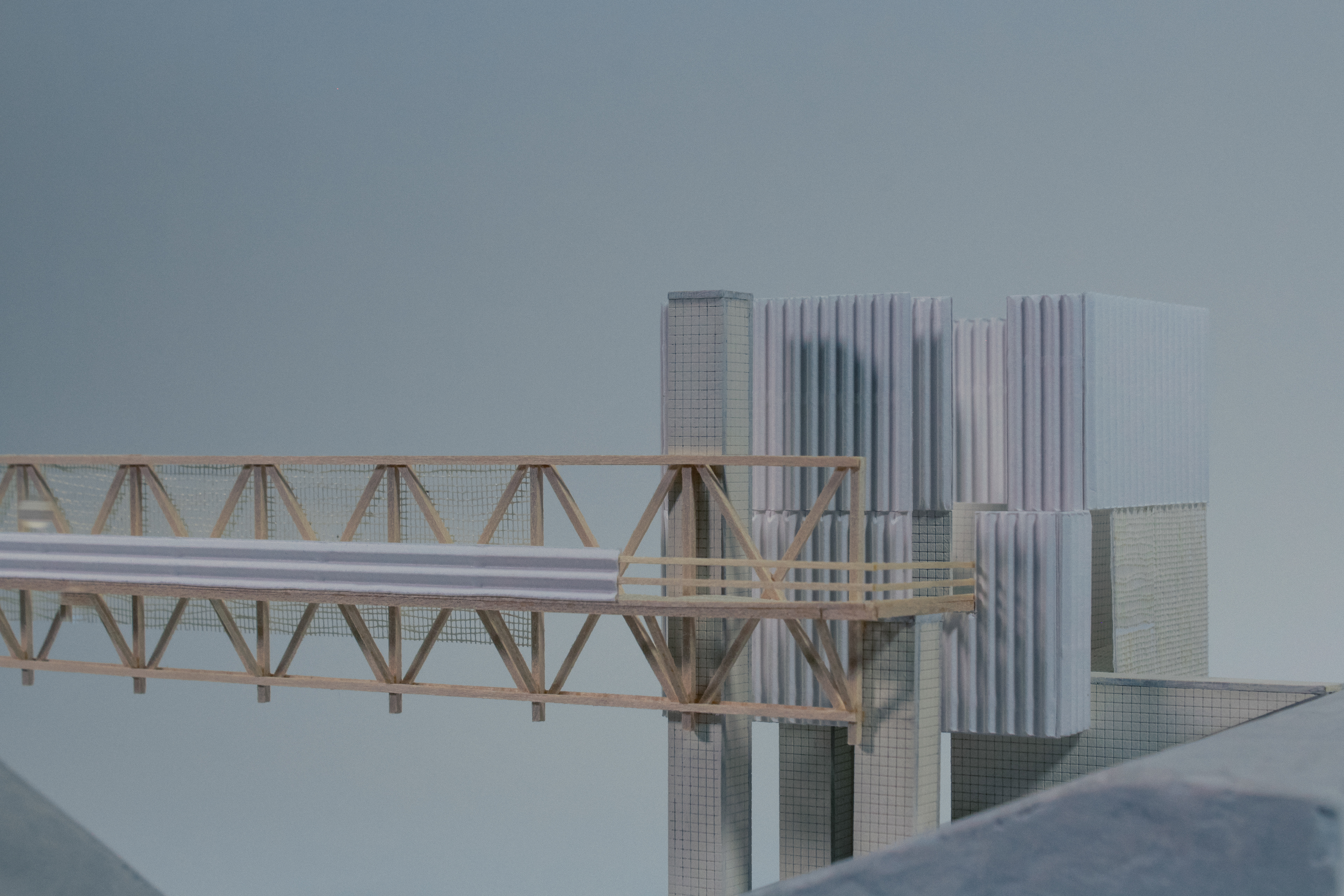2022; Thesis Proposal
Approaching the Grave—East St. Louis, IL
IV. Bloody Island—The Battleground of Hubris—The Grave
Circa 1798, a sandbar began to form in the river adjacent to St. Louis, gradually expanding to become Bloody Island. The island did not fall under the jurisdiction of Missouri or Illinois, which caused it to become a popular site for duels.
The clashing egos of attorneys Thomas Hart Benton and Charles Lucas resulted in two duels and the death of Lucas in 1817. This event would mark the start of forty years of duels at Bloody Island. The island has since merged into the Illinois shore, where it occupies abandoned blocks of a once industrial area.
[Noon]
Follow the road north along the River. Approach the pumping station which marks the intersection of a drainage canal and the River, with two architectural figures beyond.
Approach one of the volumes.
Enter the volume and follow the ramp around the edge.
Enter the central space. Note the stones below and the sky above. Note the obscured horizon within the space.
Pick up a handful of stones from the ground surface and exit the volume.
Cross the bridge over the channel.
Enter the second volume and place the stones on the ground surface. View across the canal to the opposing figure.
Exit the second insular volume.
[Intention]
The procession ends at Bloody Island with a contemplative space at the site of previous duels. Two architectural figures face one another across the channel. The visitor participates in the formation of the space by moving stones from one volume to the other, in reference to the tradition of placing pebbles on a gravestone. The movement of stones creates a fluctuating ground plane between the two figures, allowing views out of one volume and not the other.
Obscure the horizon to create an insular, grave-like space.
Participatory construction to create an ephemeral experience of the space.
Facilitate reflection on the force of ego (humankind) against ego (humankind).
The Grave—Physical Model [Plaster, Wood, Wire, Paper, Foam, Gauze, Epoxy]

